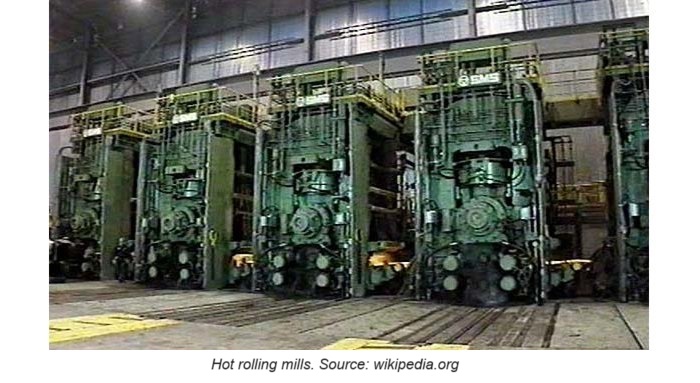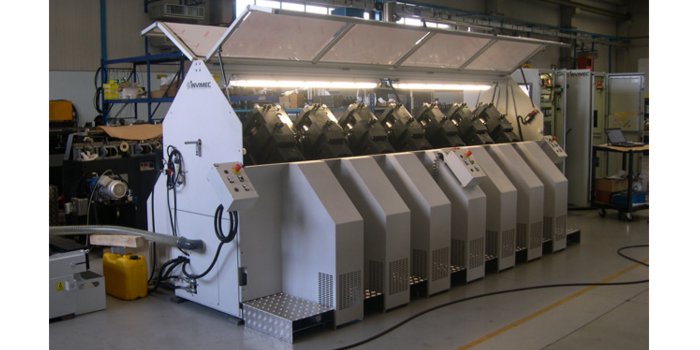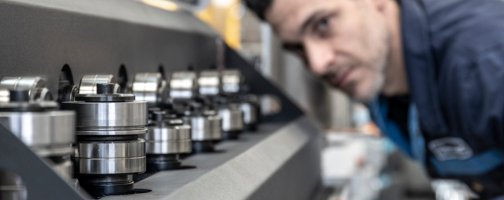Metal rolling can occur through hot or cold temperatures, each with distinct effects on the starting material, in order to produce various metallic products with excellent mechanical and surface properties. Let’s delve into the differences between the two rolling processes.
Understanding rolling in metalworking
Metal rolling is a mechanical process that falls under plastic deformations, thus involving all the material modifications that are permanent after processing (unlike elastic deformations, which imply a degree of reversibility to the original state).
The rolling process involves passing a piece of metal through a series of rotating cylinders within the rolling machines: these cylinders exert a strong pressure, causing the material to be flattened, elongated and shaped. As a result, the rolled piece undergoes a permanent deformation of its crystalline structure.
Automated rolling mills are used extensively in various industries to produce semi-finished products such as wires, strips or profiles from rounds, sheets or billets.
Hot rolling: what it is and how it works

Hot metal rolling is performed at temperatures above the material’s recrystallization point, typically between 1000-1300°C. At these temperatures the metal remains in a solid state, but also allows for significant plastic deformations.
The hot-rolled metal is heated in special furnaces to the desired temperature, making it sufficiently malleable. It is then passed multiple times through hot rolling mills that progressively reduce its thickness. However, with each pass, the reduction becomes more limited in order to avoid forming imperfections in and on the material.
Additionally, the dimensional tolerance of hot rolling is relatively low. Shrinkage and distortion of the metal during cooling, as well as the formation of a surface oxide layer, make it more challenging to control the thickness of the semi-finished products and increase the risk of dimensional inaccuracies.
Cold rolling: advantages of the process
Cold rolling is usually carried out at room temperature, below the material’s recrystallization point. Typically, cold rolling involves medium to large-sized semi-finished products that have already undergone hot rolling and require further refinement, in order to achieve a higher degree of surface finish and better mechanical properties.
The passage of cold-rolled metal through modern rolling machines causes a phenomenon called strain hardening, increasing its strength and hardness but also making it more brittle. Despite the risk, cold rolling allows for products with precise dimensions and high mechanical strength.

In fact, cold rolling mills achieve a dimensional precision and a surface finish that is 5 to 10 times higher than hot rolling mills. This is why the cold rolling process often constitutes the finishing phase that follows preliminary hot processing.
Differences between hot and cold rolling
We can affirm that hot rolling and cold rolling are complementary processes: when used in sequence, they allow for the production of high-quality metallic products with excellent mechanical properties. Here are the differences between the two processes:
| Hot metal rolling | Cold metal rolling | |
| Temperature | 1000 – 1300°C | Room temp |
| Resistance | Lower increase | Higher increase |
| Malleability | Good | Reduced |
| Deformation | High | Limited |
| Tolerance | Lower (± 1 – 2 mm) | Higher (± 0,05 – 0,2 mm) |
| Finish | Rough | Refined |
| Products | Railroad tracks, metal sheets and strips, seamless tubes, large rings and more | Metal wires, precision tubes with or without weld, thin strips and sheets, semi-finished products |
In particular, cold metal rolling is essential for two main reasons:
- It imparts excellent characteristics of strength, hardness and toughness to the material, thanks to the strain hardening;
- It allows for high-quality dimensional precision and surface finish, which cannot be achieved by hot metal rolling alone.
As experts in metal rolling for over 60 years, Invimec designs and manufactures cold rolling mills for both industry and jewelry, along with a wide range of complementary solutions for metal forming and precision metalworking.
We provide complete “turnkey” cold rolling plants, integrating our machines into automated, technological and innovative production lines. Discover our solutions!
